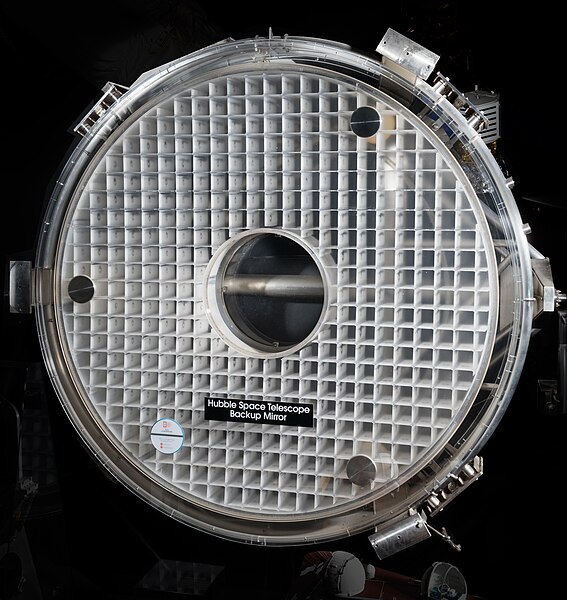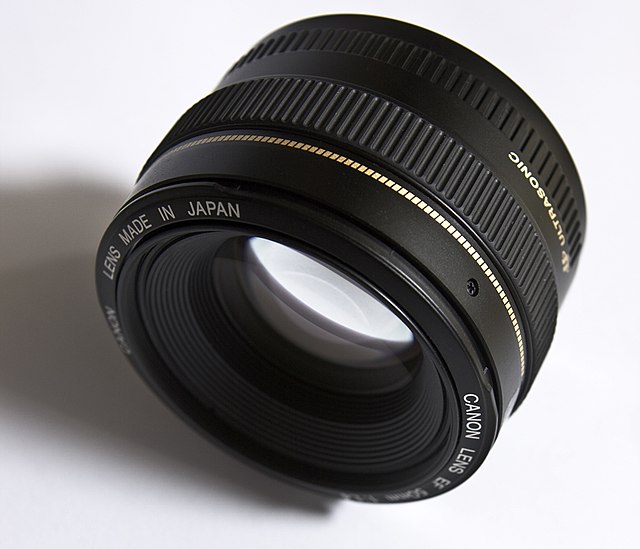A primary mirror is the principal light-gathering surface of a reflecting telescope.
Six of the 18 primary mirrors of the James Webb Space Telescope being prepared for acceptance testing.
The correctly ground backup primary mirror built by Eastman Kodak for the Hubble space telescope (the mirror was never coated with a reflective surface, hence its honeycomb support structure is visible). It now resides in the National Air and Space Museum in Washington, DC.
The largest non-segmented mirror in an optical telescope in 2009, one of the Large Binocular Telescope's two mirrors.
In optical engineering, an objective is an optical element that gathers light from an object being observed and focuses the light rays from it to produce a real image of the object. Objectives can be a single lens or mirror, or combinations of several optical elements. They are used in microscopes, binoculars, telescopes, cameras, slide projectors, CD players and many other optical instruments. Objectives are also called object lenses, object glasses, or objective glasses.
Several objective lenses on a microscope.
Objective lenses of binoculars
Two Leica oil immersion microscope objective lenses; left 100×, right 40×.
Camera photographic objective, focal length 50 mm, aperture 1:1.4







